30 Best Beast Illustration Ideas You Should Check

Source: Straban, Sea Dragon, DeviantArt, https://www.deviantart.com/straban/art/SEA-DRAGON-855540726
Unleash your creativity and dive into the wild world of beast illustration! Whether you’re a seasoned artist or just starting to explore your artistic side, this article is your gateway to discovering some of the most dynamic and imaginative beast illustrations out there. From mythical creatures lurking in enchanted forests to ferocious beasts prowling in shadowy realms, each illustration brings its own unique flair and storytelling element.
These beast illustrations aren't just drawings; they are a bold blend of imagination and skill, crafted to captivate and inspire. Perfect for those looking to infuse a little magic and mystery into their work, our roundup includes a variety of styles—from the darkly gothic to the whimsically surreal. Get ready to be inspired by the power and beauty of the wild, as we showcase some of the best beast illustration ideas to check!
Beast Illustration Ideas
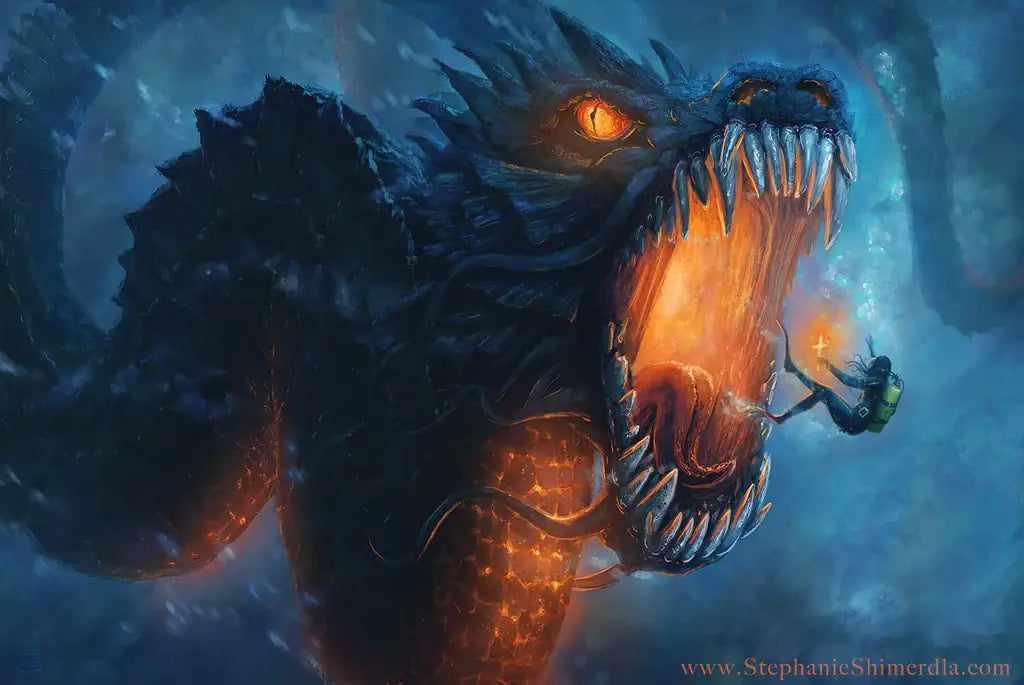
Source: Slshimerdla, Holy Diver, DeviantArt, https://www.deviantart.com/slshimerdla/art/Holy-Diver-683863237
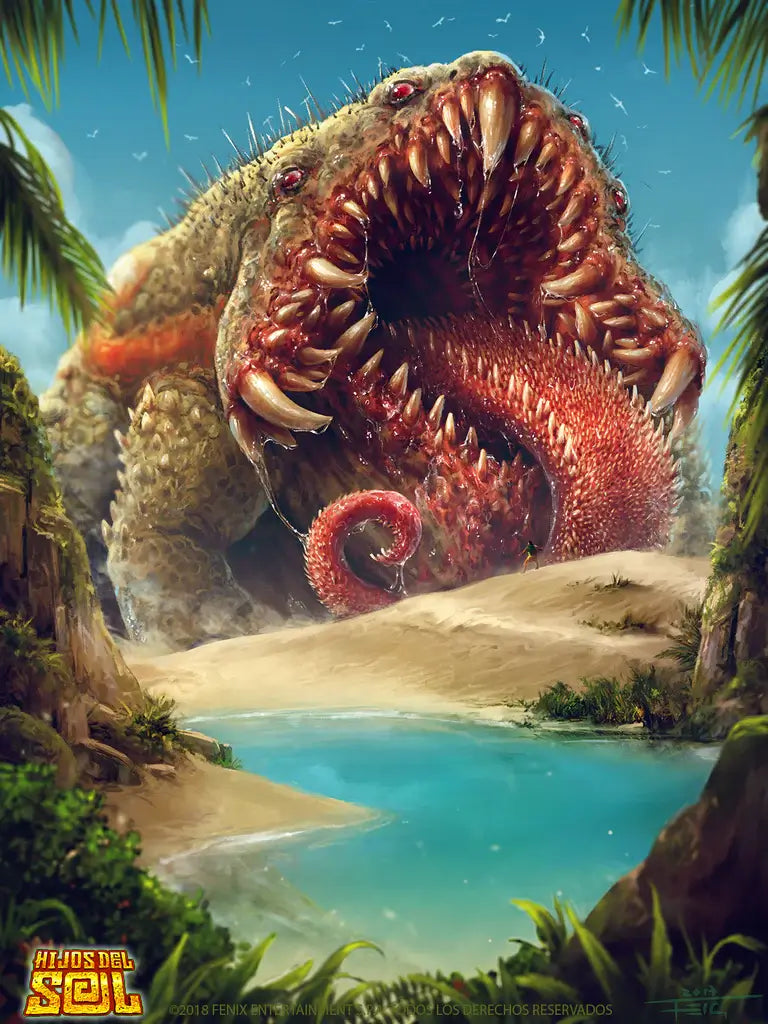
Source: Feig-Art, Khodumodumo, DeviantArt, https://www.deviantart.com/feig-art/art/Khodumodumo-743130424
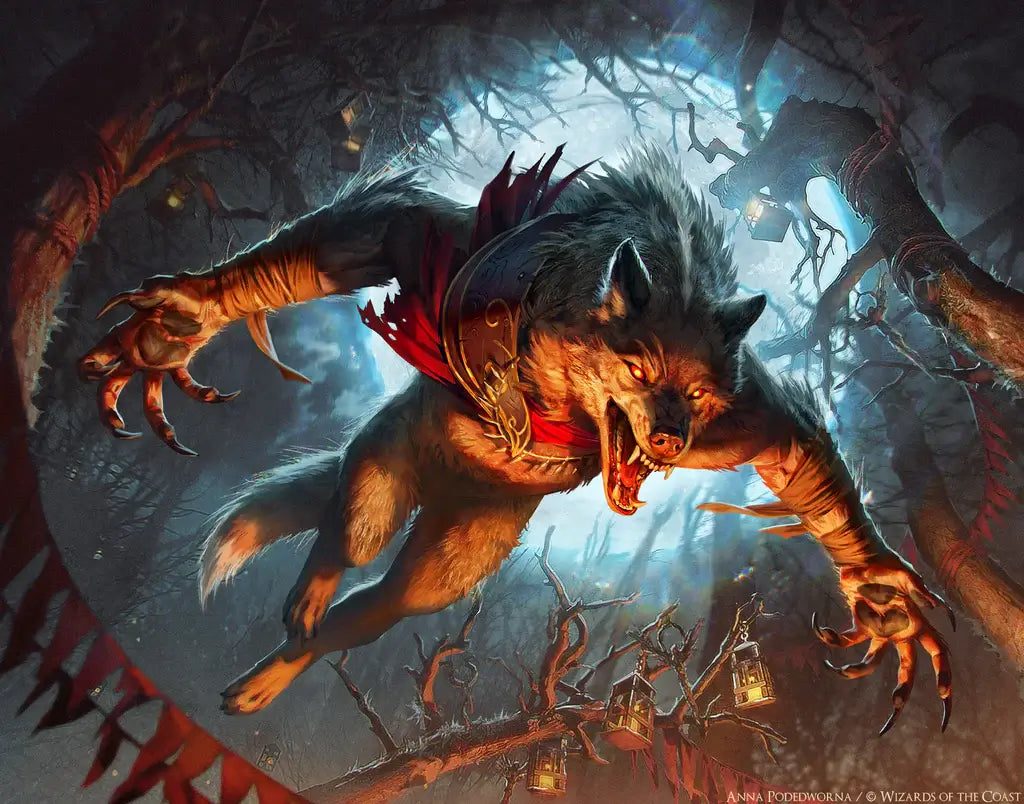
Source: Akreon, Arlinn, DeviantArt, https://www.deviantart.com/akreon/art/Arlinn-891079161
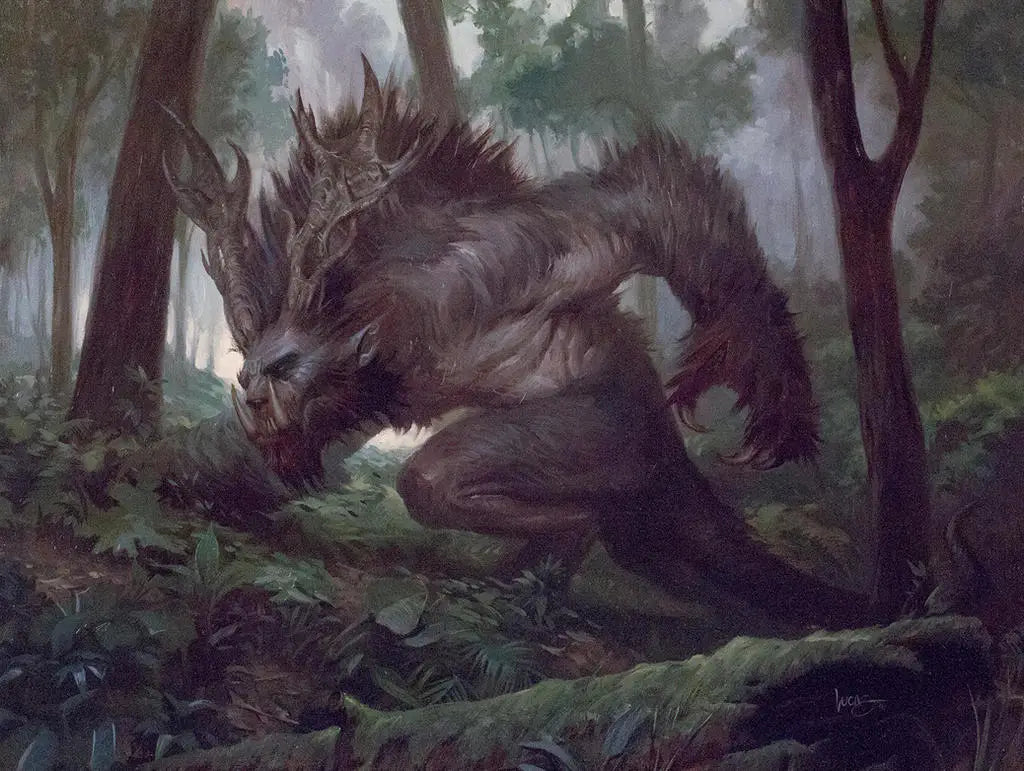
Source: Lucasgraciano, Fiend, DeviantArt, https://www.deviantart.com/lucasgraciano/art/Fiend-611157013
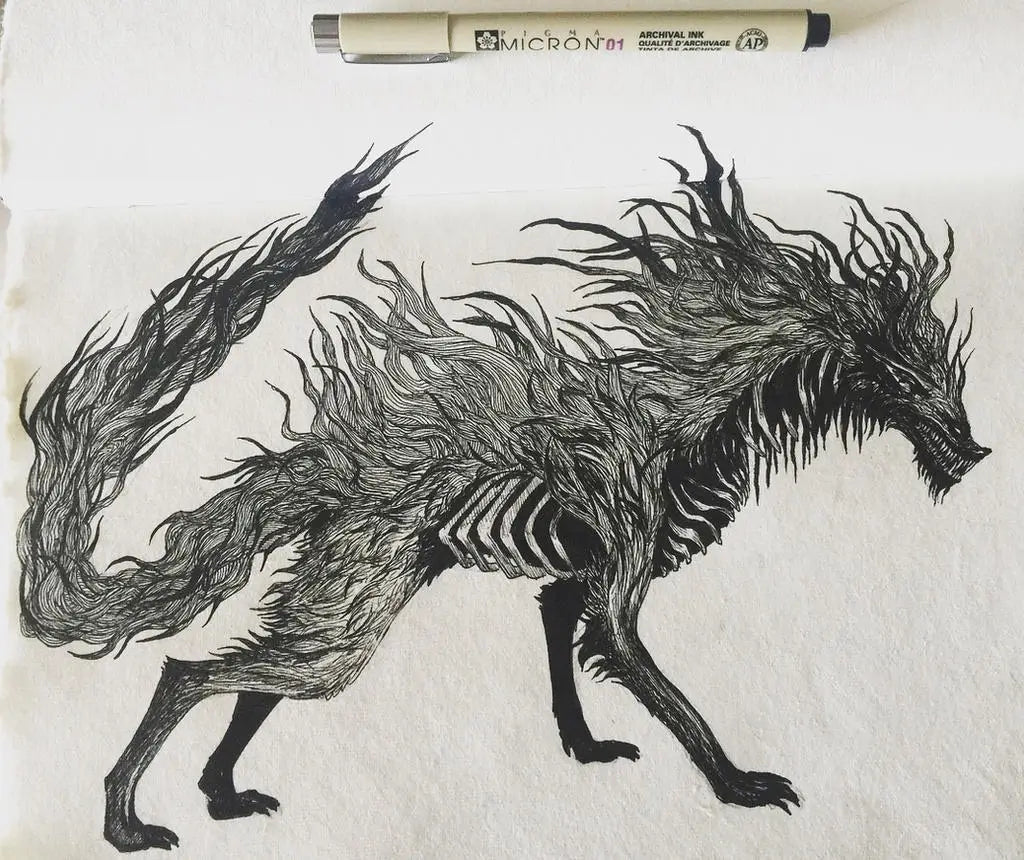
Source: Oliviarampaige, Great One Beast, DeviantArt, https://www.deviantart.com/oliviarampaige/art/Great-One-Beast-747162182

Source: Deskridge, The Ozark Howler, DeviantArt, https://www.deviantart.com/deskridge/art/The-Ozark-Howler-911125863
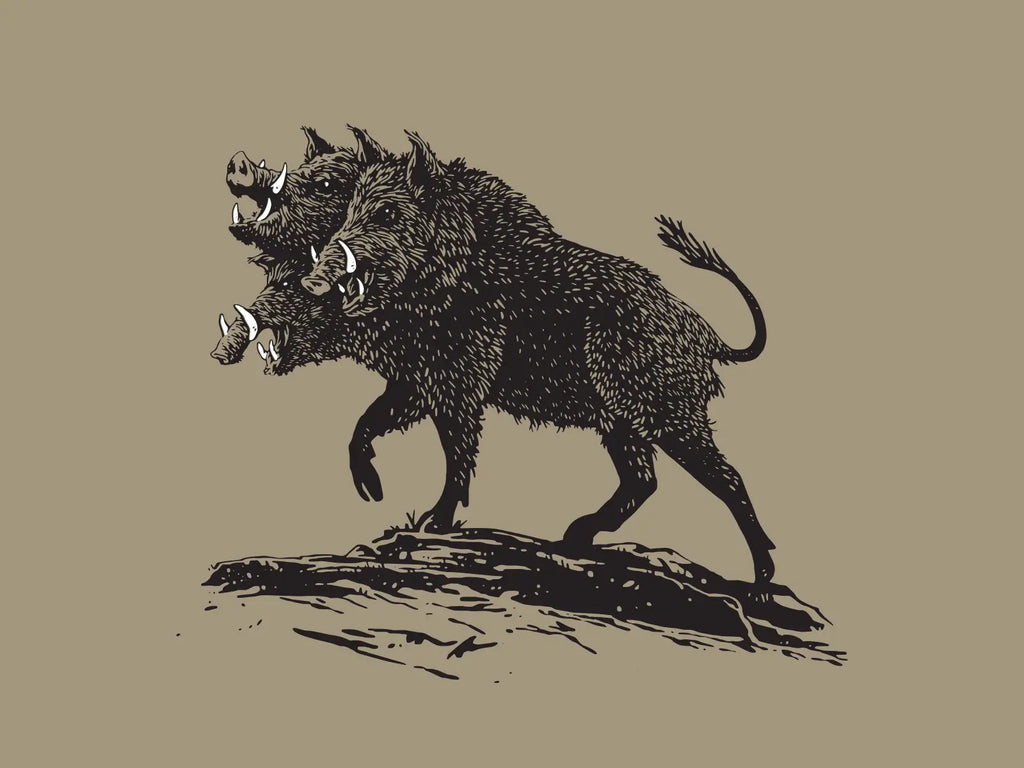
Source: Adam Johnson, Three-Headed Wild Hog, Dribbble, https://dribbble.com/shots/17580590-Three-Headed-Wild-Hog

Source: Zypherax, Arvassa, The Ancient, DeviantArt, https://www.deviantart.com/zypherax/art/Arvassa-The-Ancient-636860124
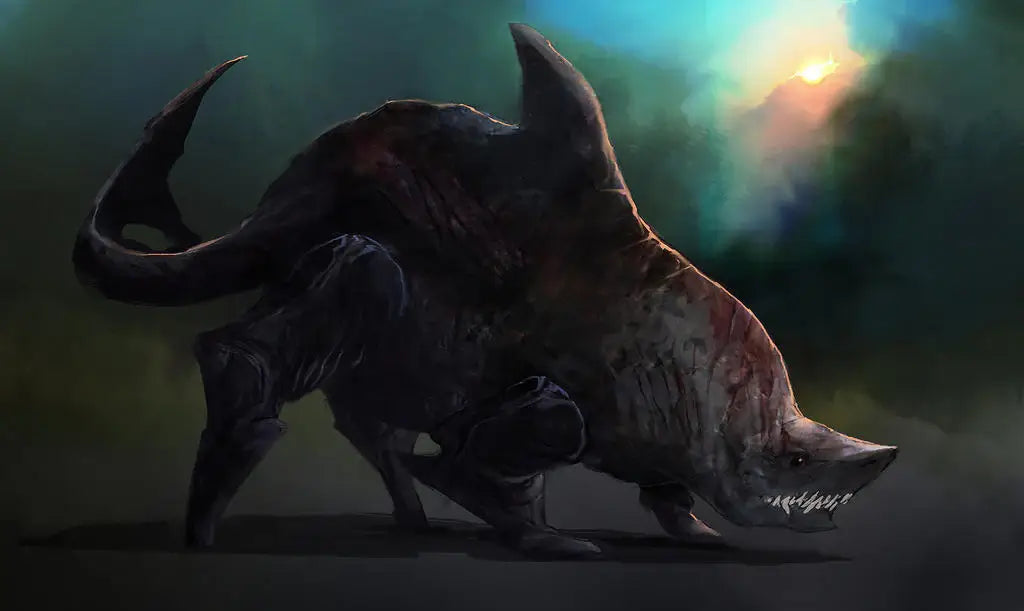
Source: Cobaltplasma, Sharkbear, DeviantArt, https://www.deviantart.com/cobaltplasma/art/Sharkbear-601284670
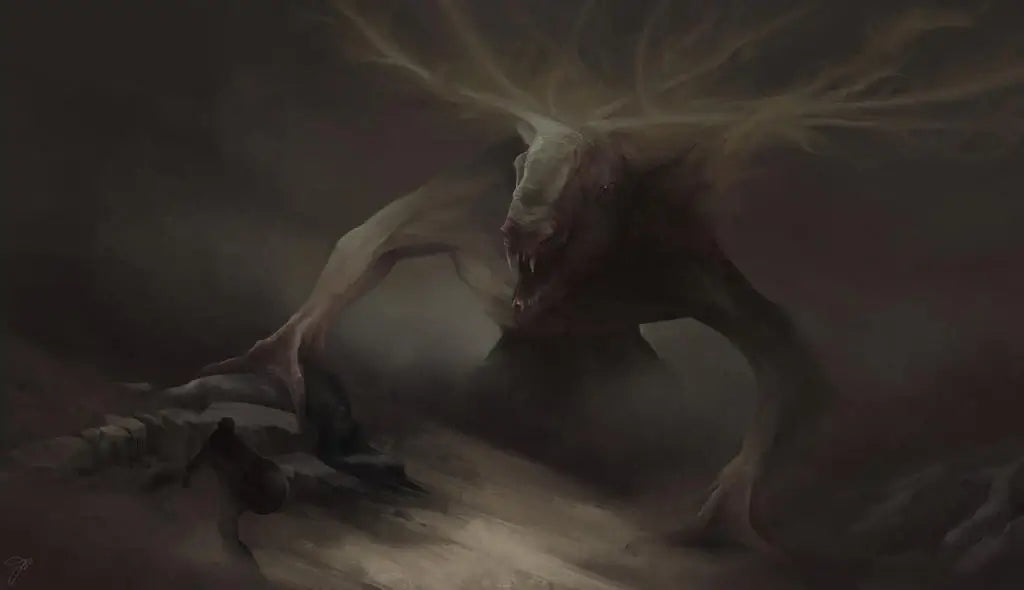
Source: Blacksheep4, Bies, DeviantArt, https://www.deviantart.com/blacksheep4/art/Bies-864122115
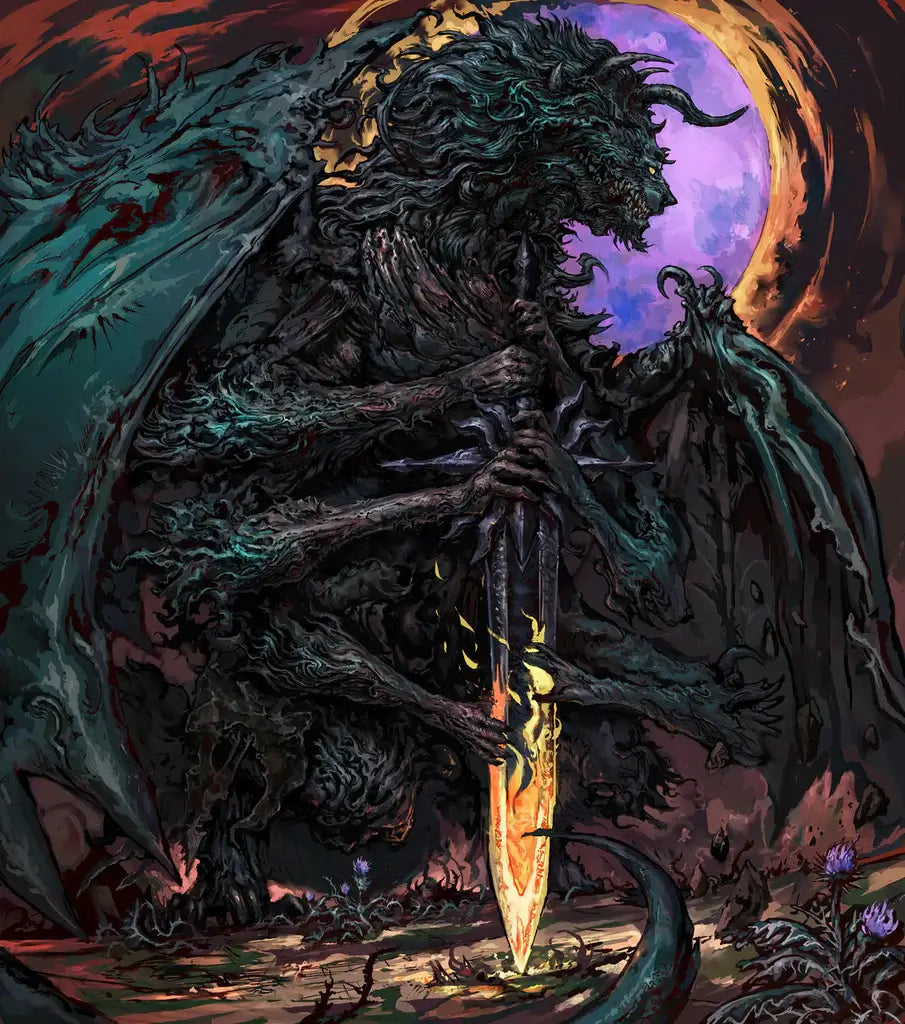
Source: Carpet-Crawler, Steinhardt's Guide to the Eldritch Hunt, DeviantArt, https://www.deviantart.com/carpet-crawler/art/Dragon-Steinhardt-s-Guide-to-the-Eldritch-Hunt-931507740
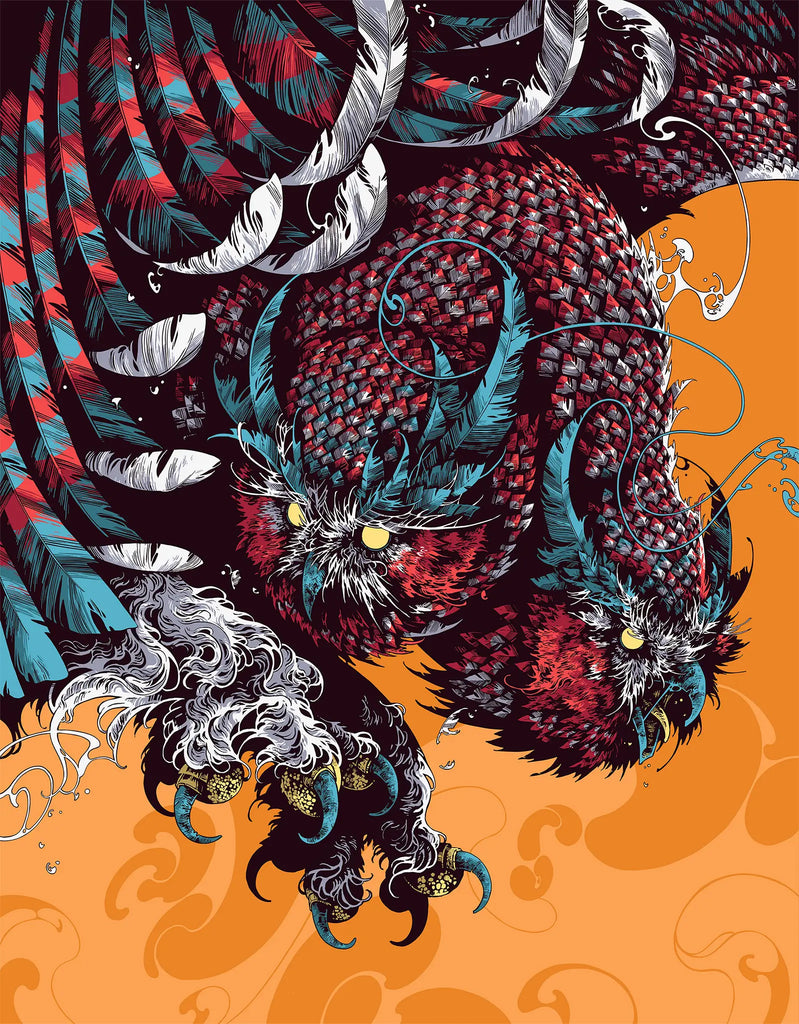
Source: Ivan Belikov, Great Tiger Owl, Dribbble, https://dribbble.com/shots/14425678-Great-Tiger-Owl
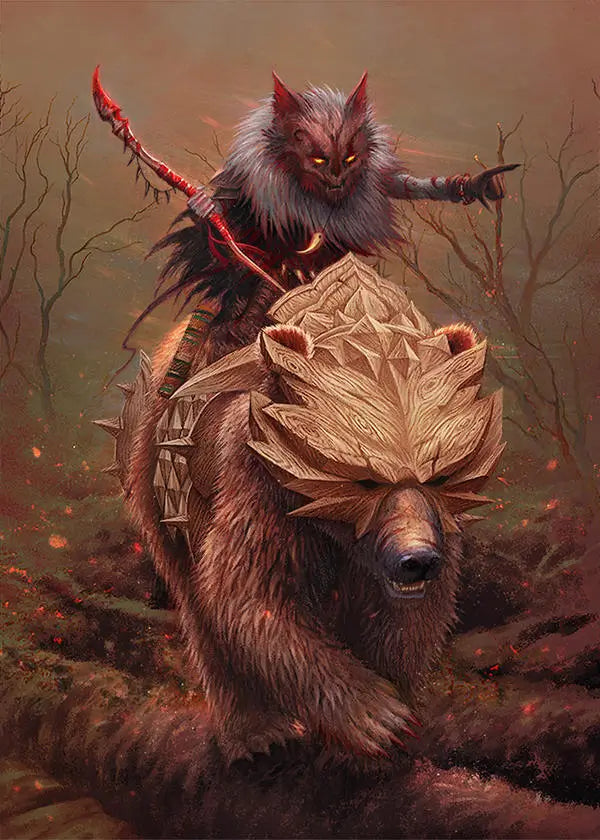
Source: Kotnonekot, Wermling Beast Tyrant, DeviantArt, https://www.deviantart.com/kotnonekot/art/Wermling-Beast-Tyrant-566329098
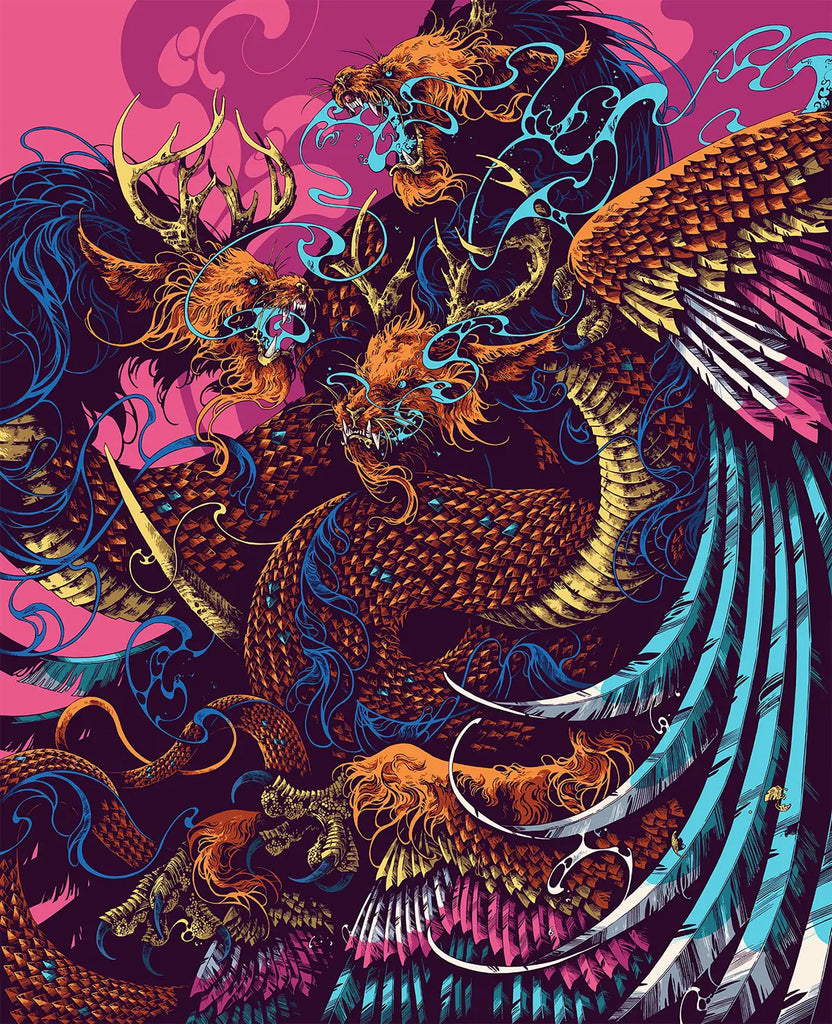
Source: Ivan Belikov, Creatures 7, Behance, https://www.behance.net/gallery/118974889/Creatures-7
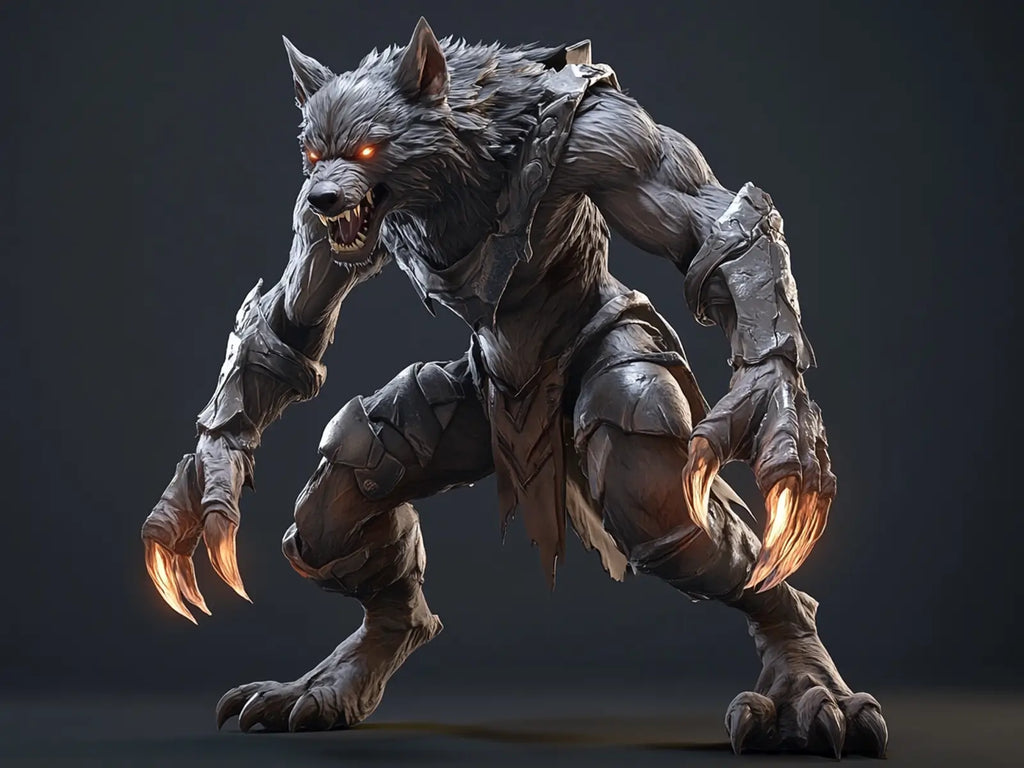
Source: Theodor 3D, Moonlit Terror, Dribbble, https://dribbble.com/shots/25340958-Moonlit-Terror
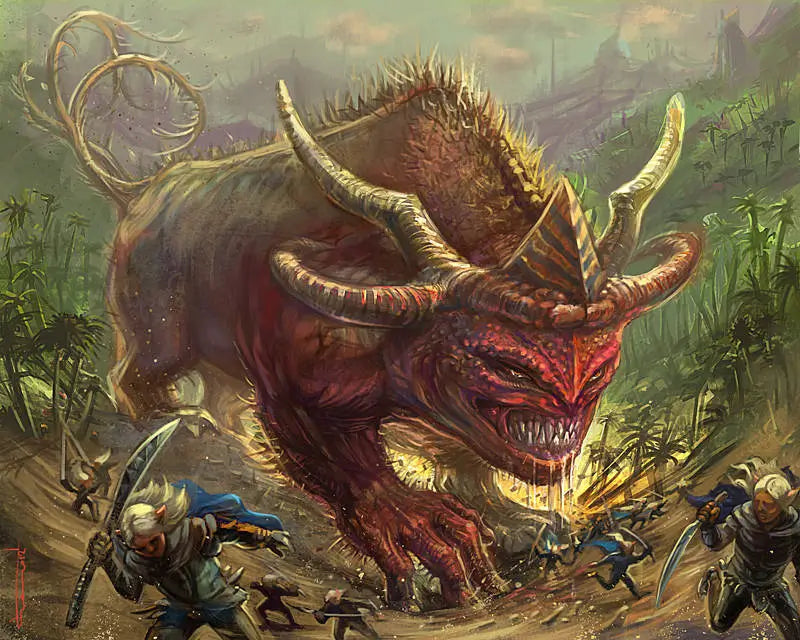
Source: Bocho, Big Beast, DeviantArt, https://www.deviantart.com/bocho/art/Big-beast-323654999
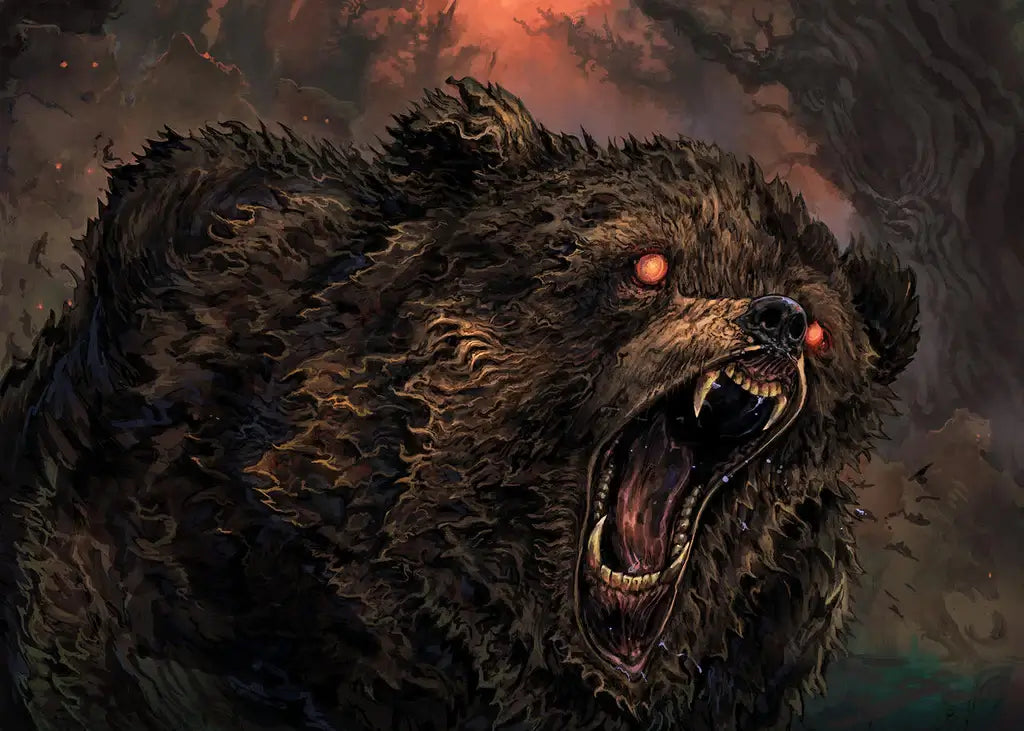
Source: Carpet-Crawler, Grizzly, DeviantArt, https://www.deviantart.com/carpet-crawler/art/Grizzly-Inscryption-Card-958218737
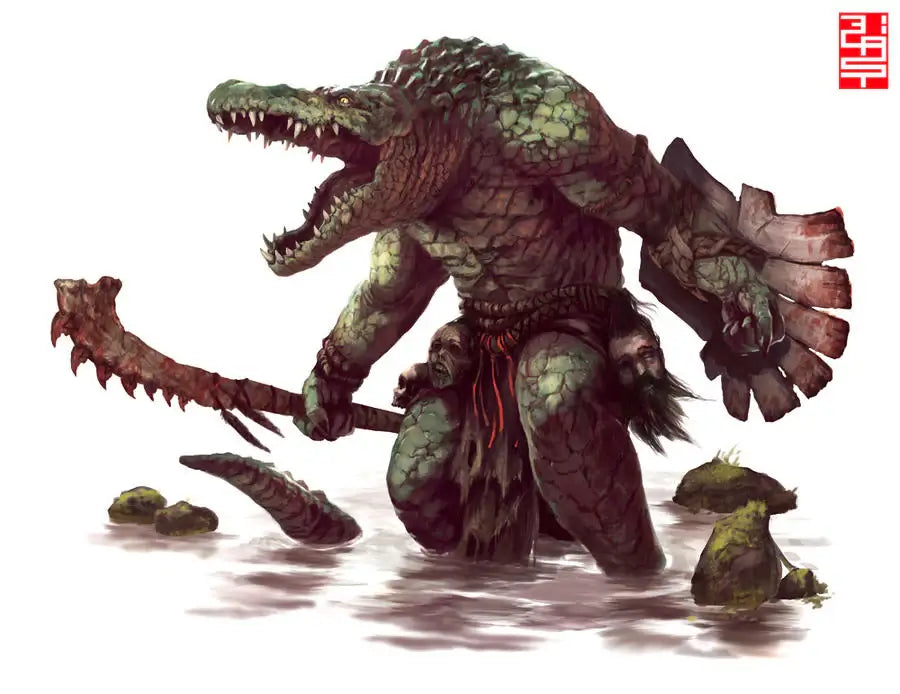
Source: Biagiodalessandro, GatorMan, DeviantArt, https://www.deviantart.com/biagiodalessandro/art/GatorMan-667804315
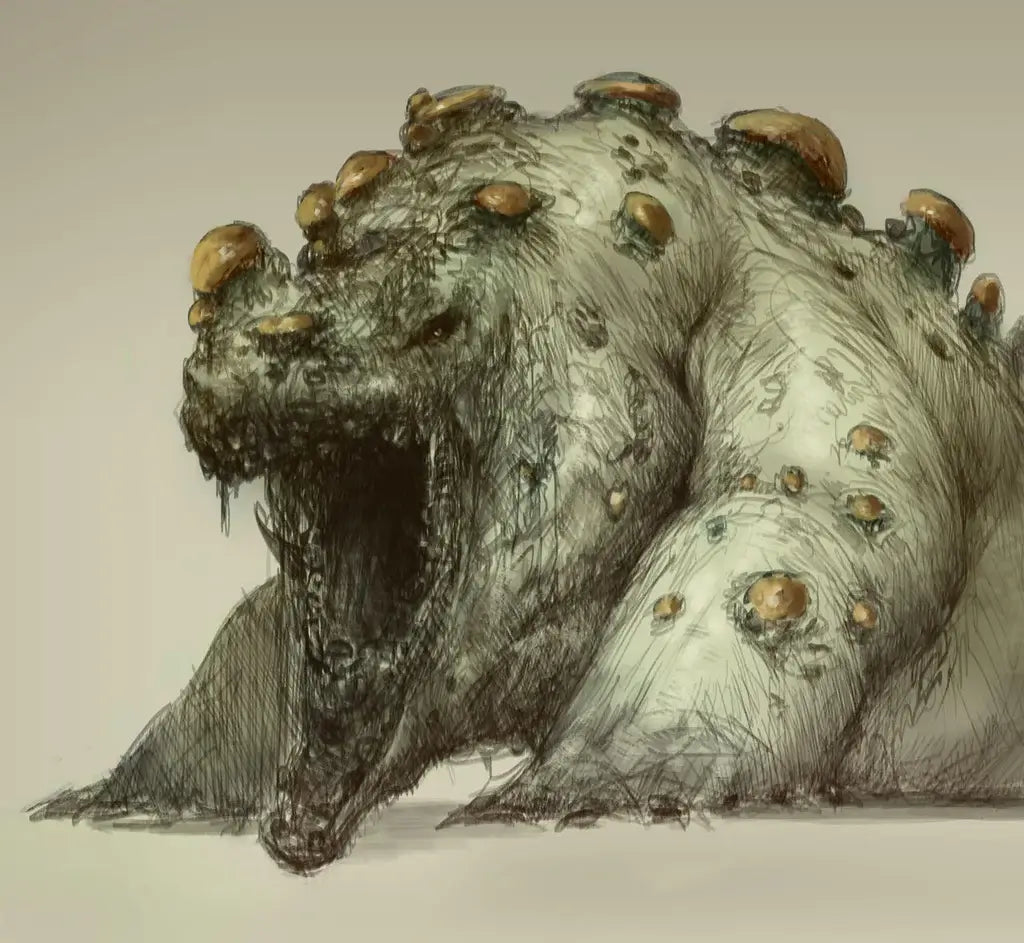
Source: Tr0tzki, Shroom Beast, DeviantArt, https://www.deviantart.com/tr0tzki/art/Shroom-beast-939464882

Source: Themrkraken, Black Snow, DeviantArt, https://www.deviantart.com/themrkraken/art/Black-Snow-794834610
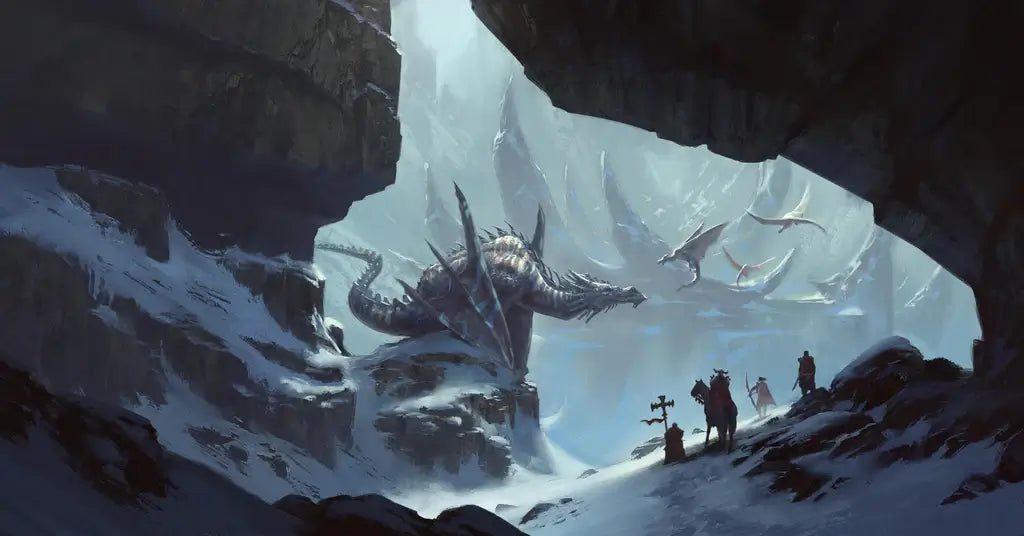
Source: Klauspillon, Dragon's Nest, DeviantArt, https://www.deviantart.com/klauspillon/art/Dragon-s-Nest-492937334
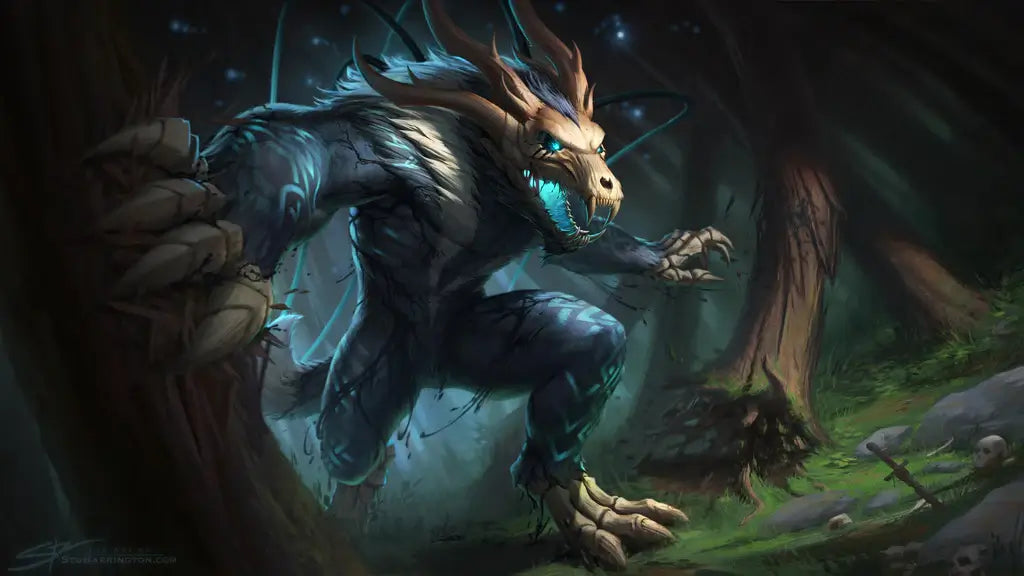
Source: Stuharrington, Fenrir, DeviantArt, https://www.deviantart.com/stuharrington/art/BoneSpirit-Fenrir-795971641
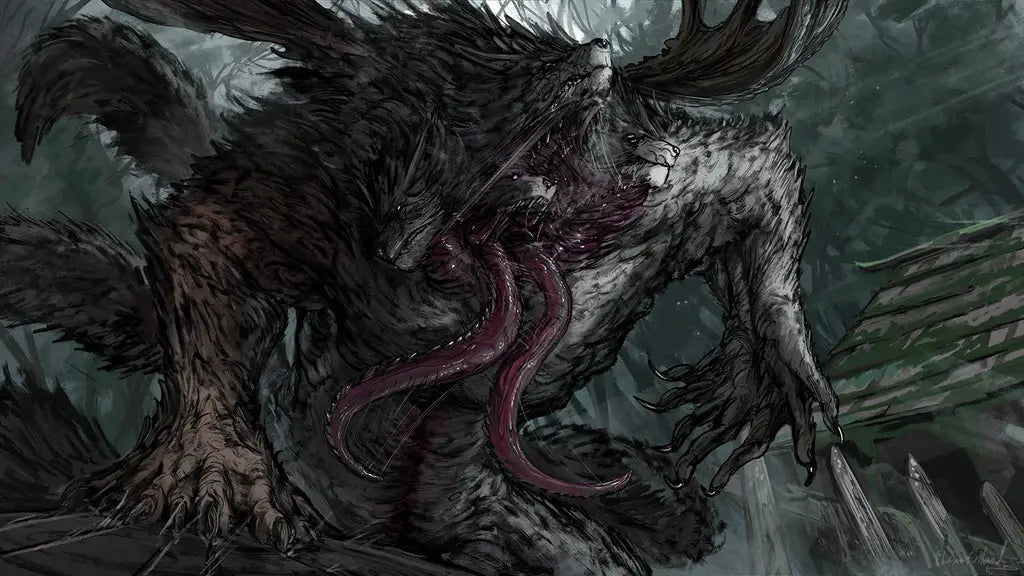
Source: Themefinland, Horrors of the Silent Woods, DeviantArt, https://www.deviantart.com/themefinland/art/Horrors-of-the-silent-woods-811402906

Source: Manthoslappas, Enlarge, DeviantArt, https://www.deviantart.com/manthoslappas/art/Enlarge-Arcane-Gladiator-TCG-848104234
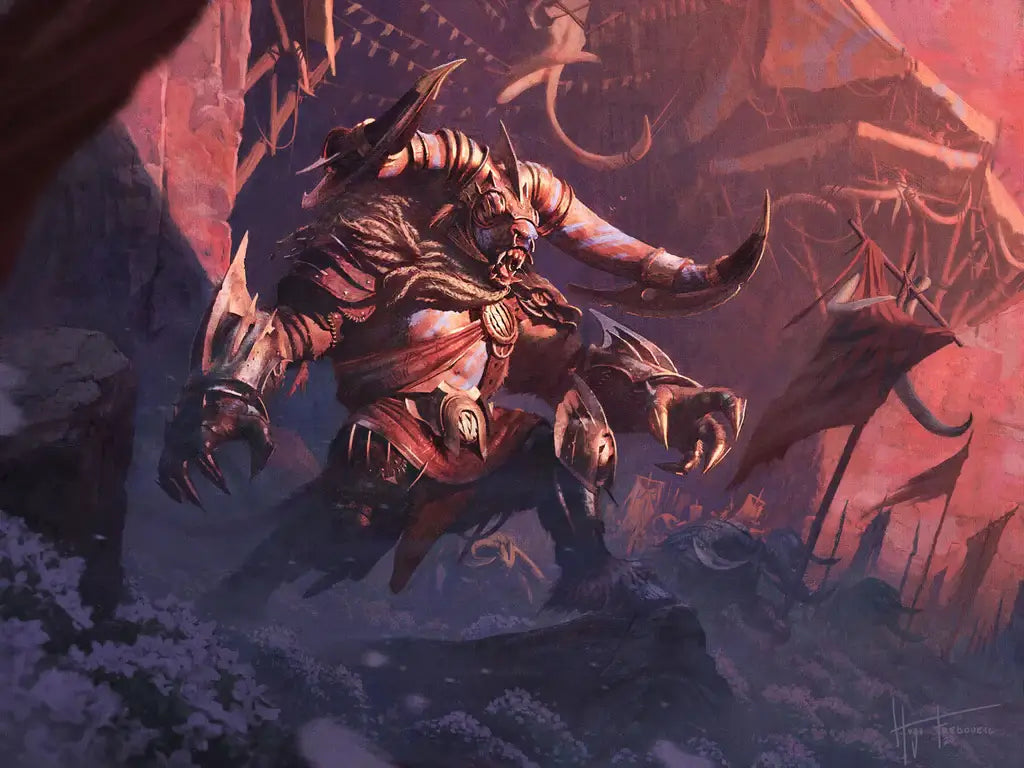
Source: Hugofredoueil, Sprinter, DeviantArt, https://www.deviantart.com/hugofredoueil/art/Sprinter-warrior-of-the-Sharp-Horns-tribe-940773361
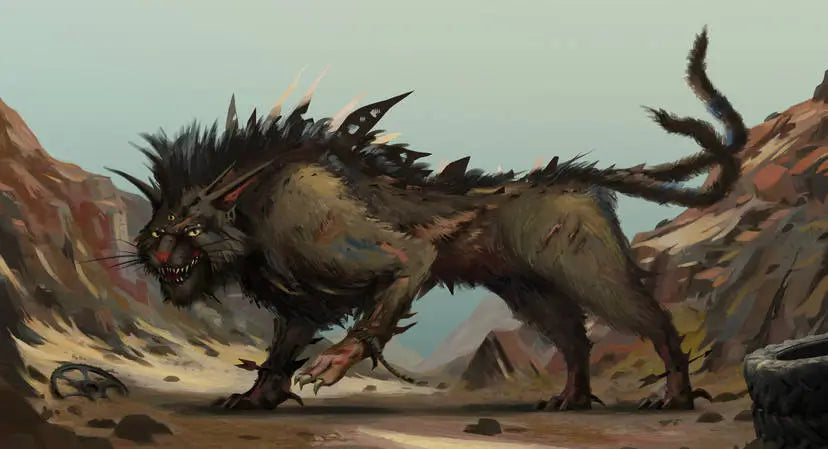
Source: Amagron, Fauvard, DeviantArt, https://www.deviantart.com/amagron/art/FAUVARD-914849505

Source: Mikakoskart, Fear of The Valley, DeviantArt, https://www.deviantart.com/mikakoskart/art/Fear-of-The-Valley-869253761

Source: Javiergonzalezart, Wooded Chimera, DeviantArt, https://www.deviantart.com/javiergonzalezart/art/Wooded-Chimera-903640801

Source: Manthoslappas, Colossal Snail, DeviantArt, https://www.deviantart.com/manthoslappas/art/Colossal-Snail-Arcane-Gladiator-TCG-834349359
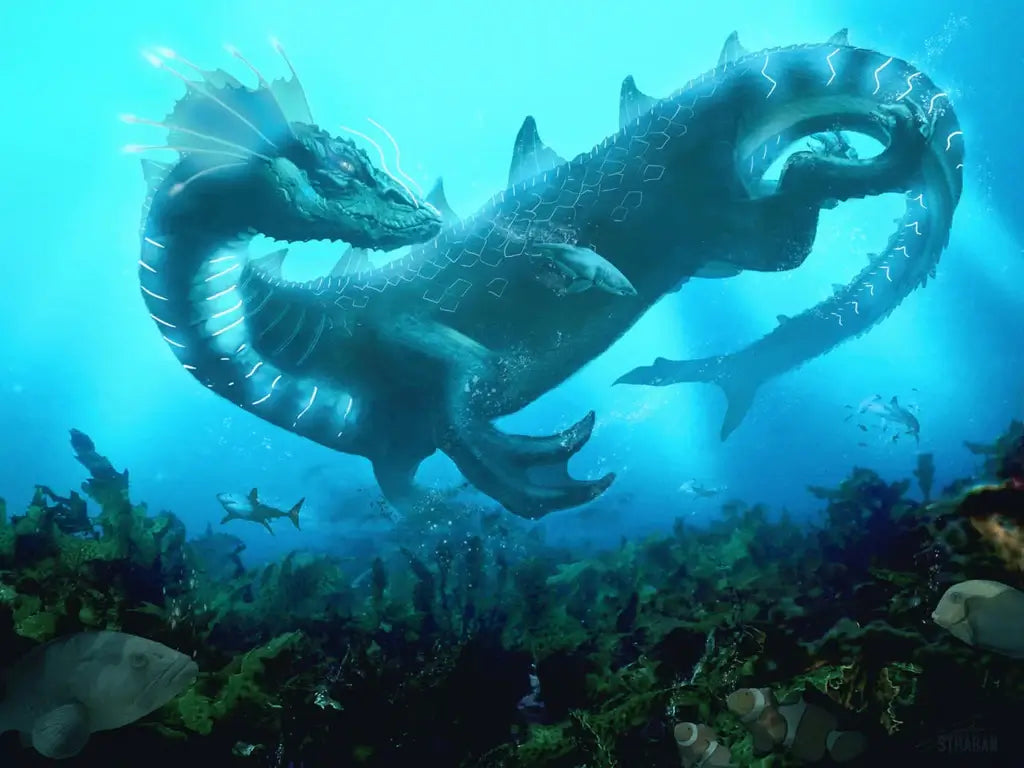
Source: Straban, Sea Dragon, DeviantArt, https://www.deviantart.com/straban/art/SEA-DRAGON-855540726
What Are the Best References for Beast Illustration?
Beast illustration is all about capturing the wild, the mythical, and the downright terrifying! But even the most creative artists need solid references to bring their creatures to life. Whether you’re sketching a legendary dragon or a monstrous hybrid, having strong visual inspiration is key. Let’s dive into the five best references that will help you craft the ultimate beast illustration!
Real-World Animals – Nature’s Own Beasts
The best beasts often have a foundation in reality. Studying real-world animals gives your beast illustration a sense of anatomy, movement, and texture that makes it believable. Look at big cats for sleek power, reptiles for scaly textures, or deep-sea creatures for eerie, alien-like designs. Zoos, wildlife documentaries, and high-resolution nature photography are goldmines of reference material. The more you study real-life creatures, the more convincingly you can blend their traits into your beasts.
Mythology and Folklore – Ancient Beasts Reimagined
For centuries, cultures worldwide have created fascinating beast illustrations in myths and legends. From the fire-breathing dragons of Europe to Japan’s mystical kirin and the fierce chimera of Greek mythology, these creatures offer endless inspiration. Books on mythology, museum artifacts, and even ancient cave paintings can give you unique ideas to build your own legendary beast illustration. Mix and match different mythical creatures to create something entirely new!
Creature Concept Art – Learning From the Masters
If you want to take your beast illustration skills to the next level, study the work of professional creature designers. Films, video games, and graphic novels feature some of the most breathtaking and well-designed monsters ever created. Legendary artists like H.R. Giger (Alien), Ralph McQuarrie (Star Wars creatures), and Guillermo del Toro’s monster designs can be great references. Art books, behind-the-scenes concept art, and character design portfolios give you a look into how the best in the industry bring beasts to life.
Human Anatomy – The Unexpected Secret to Beast Illustration
Even the wildest beasts can benefit from a bit of human anatomy. Many mythical creatures have humanoid features—think of minotaurs, werewolves, and demons. Studying human muscles, skeletal structures, and even facial expressions can help you design beasts that feel alive. Blend human and animal traits creatively to create a unique and believable beast illustration. Life drawing classes, anatomy books, and 3D modeling software can all serve as excellent references.
Fossils and Prehistoric Creatures – The Original Monsters
Dinosaurs, saber-toothed cats, and giant prehistoric insects—need we say more? Paleontology provides some of the most mind-blowing references for beast illustration. Fossil records give us creatures that look straight out of a fantasy world, yet they actually existed! Museums, paleontology books, and online 3D fossil reconstructions can help you design beasts with an ancient, primal feel. If you're designing a monstrous predator, why not borrow some inspiration from the terrifying jaws of a megalodon or the armored plating of an ankylosaurus?
With these five reference sources, you’ll have everything you need to craft jaw-dropping, awe-inspiring beast illustrations. Whether you want to create terrifying monsters or majestic mythical creatures, strong references will elevate your designs and make them unforgettable!
What Are Some Popular Themes in Beast Illustration?
Beast illustrations aren't just random drawings; they're a dive into the depths of fantasy and fear, amalgamating raw emotions with wild creativity. Whether for video games, books, or personal collections, certain themes persistently capture the imagination of artists and audiences alike. Here are five popular themes in beast illustration that continue to roar with popularity:
Mythical Monsters
Step into the realms of ancient myths with dragons, griffins, and hydras. These legendary creatures have been a staple of beast illustration for centuries, representing power, mystery, and the unknown. Artists often reimagine these classics, giving them a modern twist or reviving them in hyper-realistic styles to awe and inspire.
Nature’s Fury
Mother Nature isn’t always nurturing—sometimes, she’s downright ferocious. This theme explores the savage side of natural elements, personified by beasts such as storm-wielding birds or earthquake-inducing bulls. Illustrators harness these elements to show the awe-inspiring and often terrifying power of nature, blending environmental phenomena with the anatomy of creatures to create stunning visual metaphors.
Apocalyptic Beasts
From the four horsemen to monstrous creatures rising from the sea, apocalyptic themes draw heavily on the fear of the end times. These illustrations often feature beasts as harbingers of doom, destruction, or change. The dramatic flair of these pieces makes them particularly popular in media that deals with grand narratives, like epic fantasy or sci-fi.
Spiritual Guardians
Mixing spirituality with beast illustration brings forth themes of guardianship and protection. These beasts are often depicted as majestic and powerful, embodying the strength and wisdom of the gods or ancient spirits. They serve as protectors of sacred places or peoples, often crafted with an aura of divine right and mystical power, appealing to our deeper sense of mystery and reverence.
Hybrid Horrors
The uncanny valley gets even deeper when artists merge multiple animals or blend humans and beasts to create chimeras and other hybrid horrors. These illustrations challenge our perceptions of the natural order and evoke a sense of both wonder and discomfort. They're particularly popular in horror and fantasy genres, providing a visual exploration of the themes of mutation, evolution, and the unnatural.
Each of these themes not only captivates and entertains but also invites viewers to ponder deeper stories behind the fearsome fangs and formidable fur. Beast illustration, in its essence, is about pushing boundaries—both of the real and the imagined. So, when you're sketching out a new creature, think about the rich themes you can tap into to make your beast truly breathtaking.
What Styles Are Popular in Beast Illustration?
Diving into the realm of beast illustration reveals a vibrant spectrum of styles that can transform the simple concept of a beast into a mesmerizing piece of art. Whether you're a budding artist looking for your niche or an enthusiast appreciating the craft, understanding popular styles in beast illustration can truly enhance your artistic adventures. Here are five popular styles that make beast illustrations stand out in any gallery, book, or digital display!
Realistic and Detailed
When it comes to making mythical creatures come to life, nothing beats the realistic style. This approach focuses on fine details, accurate anatomy, and lifelike textures that make the beasts seem as if they could leap off the page. Artists spend countless hours perfecting the fur, scales, and eyes to create a sense of awe and realism. This style is perfect for those who want to immerse viewers in a world where fantasy creatures might exist right alongside us.
Stylized and Abstract
On the flip side of realism is the stylized or abstract approach to beast illustration. This style bends the rules of anatomy and physics to create unique, imaginative creatures that defy expectations. With bold colors, exaggerated forms, and often whimsical elements, stylized illustrations allow artists to play with emotions and themes in a more expressive way. This style is a favorite among children's book illustrators and animators who aim to captivate and inspire through vivid, fantastical imagery.
Dark and Gothic
There's something irresistibly captivating about the dark and gothic style in beast illustration. This style explores the shadowy corners of the imagination, featuring beasts that are menacing, mysterious, and majestic. Artists use a muted color palette with splashes of intense colors like deep reds or glowing eyes to enhance the mood. Perfect for horror enthusiasts and tales of dark fantasy, gothic beast illustrations send shivers down the spine while holding the viewer's gaze with their haunting beauty.
Graphic and Minimalist
Graphic and minimalist styles have surged in popularity, especially in modern branding and digital art. These illustrations use clean lines, limited color palettes, and often geometric shapes to convey the essence of the beast with minimal detail. This style is particularly effective for logos, icons, and designs where simplicity and recognizability are key. It’s a fresh, modern take on beast illustration that appeals to a contemporary audience.
Watercolor and Ink
For those who appreciate a softer, more fluid approach, watercolor and ink styles offer a beautiful way to depict beasts. These illustrations often have a dreamlike quality, with colors blending into each other and fine ink details adding structure and depth. The watercolor style is perfect for creating atmospheric and ethereal beast illustrations that seem to emerge from the mists of a fantasy world. It’s a favorite among artists who want to combine traditional painting techniques with imaginative storytelling.
Each style brings a different flavor to the table, offering limitless possibilities for artists to explore their creative visions. Whether you're looking to evoke fear, wonder, or just a touch of whimsy, there’s a style in beast illustration that can help you achieve your artistic goals.
What Are the Best Concept Colors for Beast Illustration?
When it comes to beast illustration, the choice of colors can make or break the visual impact of your creature. Colors not only define the mood and atmosphere but also bring depth and life to your fantastical creations. If you’re ready to paint the town—or perhaps just your canvas—with the best hues for your mythical beasts, here are five concept colors that can truly transform your beast illustrations into breathtaking artworks.
Mystical Blues and Purples
For beasts that inhabit the realms of magic and mystery, blues and purples are your go-to palette. These colors evoke a sense of the supernatural and can give your creatures an ethereal quality. Think of a dragon soaring through the night sky or a sea monster lurking in the deep ocean. Using various shades of blue, from deep navy to soft sky blue, along with lavender and violet, can create a dynamic and visually stunning beast that seems to belong to another world.
Earthy Greens and Browns
If your beast is a forest dweller or an earthbound entity, greens and browns are perfect to convey a natural, rugged feel. These colors help your creature blend seamlessly with its woodland surroundings or stand out as a formidable guardian of nature. Utilizing mossy greens, dark olives, and rich umbers, you can depict a creature that is both part of the landscape and a majestic presence within it. These colors are ideal for beasts like ents, trolls, or mythical forest animals.
Fiery Reds and Oranges
To depict a beast that embodies fire and fury, reds and oranges are your fiery friends. These vibrant, warm colors can represent the beast’s fiery breath or its fierce temper. From a flaming phoenix to a demon from the underworld, the use of reds from crimson to scarlet, and oranges from bright tangerine to deep rust, can add an intense, energetic vibe to your illustration, making it jump off the page.
Icy Whites and Cool Grays
For creatures of the cold, like ice dragons or frost giants, whites and grays can convey the chill of their frosty environment. These colors can give your beast a stark, imposing look, perfect for a creature born from snow and ice. Use shades from pure white to soft gray to silvery frost to create a beast that looks like it could freeze you with its gaze or blend into a snowy landscape, waiting for unsuspecting prey.
Metallic Golds and Silvers
To give your beast a regal or otherworldly allure, metallic colors like gold, silver, and bronze can add a touch of elegance and power. These colors work well for celestial beasts, armored dragons, or creatures with a divine heritage. Metallic hues can reflect light in your illustrations, adding a dynamic element that changes with the viewer’s perspective, making your beast illustration not just a picture, but an experience.
Choosing the right concept colors for your beast illustrations is crucial in setting them apart and giving them a unique identity. Whether you opt for mystical purples, earthy greens, fiery reds, icy whites, or regal metallics, each color palette has the potential to transform a simple sketch into a vivid, living entity. So, let the colors guide your creativity as you bring your mythical beasts to life!
What Are Some Iconic Beast Illustrations to Study?
Beast illustration has captivated audiences for centuries, featuring creatures that ignite our imaginations and challenge our perceptions of art and reality. For artists and enthusiasts alike, studying iconic beast illustrations can be both inspiring and enlightening. Here are five legendary beast illustrations that have left an indelible mark on the world of art, each bringing a unique blend of style, emotion, and creativity.
Albrecht Dürer's Rhinoceros (1515)
Albrecht Dürer’s woodcut of a rhinoceros, completed in 1515, is an iconic beast illustration that has fascinated art historians and illustrators alike. Despite never having seen a rhinoceros himself, Dürer managed to create a compelling and powerful image based on written descriptions and a sketch by an unknown artist. This illustration is a masterclass in texture and form, showing how artists can interpret secondhand information into a visually stunning piece.
John Tenniel's Jabberwocky (1871)
From the pages of Lewis Carroll's Through the Looking-Glass, John Tenniel’s illustration of the Jabberwocky is a seminal depiction of a fantastical beast. Tenniel's work perfectly captures the eerie and whimsical tone of Carroll’s verse, with the Jabberwocky depicted as a menacing creature with leathery wings and dragon-like features. This illustration is a perfect example of how art can bring literary creatures to life, influencing countless interpretations in various media.
Maurice Sendak's Wild Things (1963)
Maurice Sendak's Where the Wild Things Are features some of the most beloved beast illustrations in children’s literature. The Wild Things—each with their own distinct personalities and appearances—are both fearsome and endearing, capturing the hearts of readers young and old. Sendak's use of pen and ink, along with a muted color palette, creates a dreamlike quality that makes these illustrations timeless.
Theodore Seuss Geisel's (Dr. Seuss) Creatures
Dr. Seuss's illustrations of imaginative creatures in books like If I Ran the Zoo and The Cat in the Hat have become iconic in the realm of beast illustration. His unique style, characterized by playful lines and whimsical forms, has defined a whole genre of children’s book illustrations. Seuss’s beasts are not only visually distinctive but also carry a narrative charm that teaches and entertains.
Ray Harryhausen's Dynamation Creatures
Ray Harryhausen, a pioneer in the field of stop-motion animation, brought numerous mythical beasts to life in films such as Jason and the Argonauts and Clash of the Titans. His Dynamation technique allowed for the integration of animated models with live-action footage, creating some of the most memorable beast illustrations in cinematic history. Harryhausen’s creations, from the multi-headed Hydra to the terrifying Medusa, showcase the power of visual effects and their ability to make mythical creatures a tangible reality.
These iconic illustrations not only showcase a range of artistic techniques and styles but also highlight how beasts can be more than just scary monsters; they can be symbols of power, mystery, and wonder. By studying these masterpieces, aspiring illustrators can learn how to infuse their own beast creations with a sense of history, narrative depth, and artistic expression.
Conclusion
Mastering the art of beast illustration involves not only understanding form and texture but also skillfully using color to bring your mythical creatures to life. Whether you're aiming to evoke mood, enhance realism, or simply captivate your audience, the right color palette can dramatically influence the impact of your artwork. By carefully selecting colors that resonate with the nature and essence of your beasts, you can create more than just illustrations; you can create worlds that enthrall and inspire. Embrace the challenge, experiment with hues, and watch as your beast illustrations transform into vivid manifestations of your artistic vision.
Let Us Know What You Think!
Every information you read here are written and curated by Kreafolk's team, carefully pieced together with our creative community in mind. Did you enjoy our contents? Leave a comment below and share your thoughts. Cheers to more creative articles and inspirations!















Leave a Comment